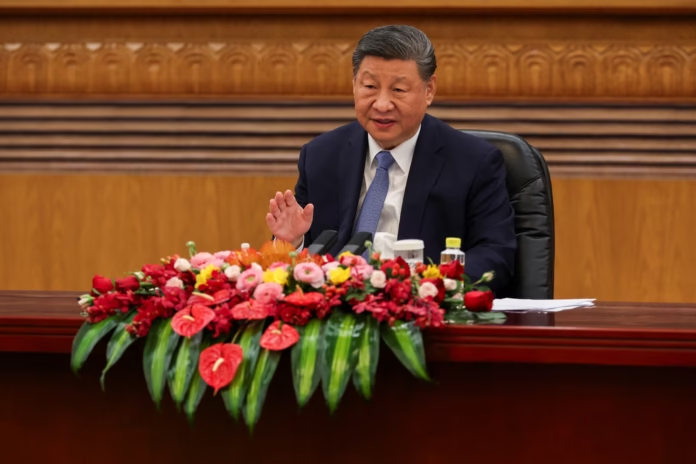Chinese President Xi Jinping has called on Vietnam to collaborate with China in supporting multilateral trade as part of a diplomatic tour aimed at strengthening ties with key export-driven economies in Southeast Asia. This visit comes as Xi seeks to present China as a stable and reliable partner amidst escalating trade tensions between the U.S. and China.
Xi arrived in Vietnam on Monday and is scheduled to visit Malaysia and Cambodia later in the week countries that have increasingly turned to China for trade and investment in recent years. His trip follows a recent move by U.S. President Donald Trump to pause tariffs on most countries for 90 days, which has shifted the focus of the U.S.-China trade conflict.
While Southeast Asian nations, still recovering from U.S. tariff impacts, are anxious about becoming collateral damage in the trade war between the two largest global economies, Xi aims to position China as a dependable advocate for global trade. Notably, Vietnam and Cambodia were hit particularly hard by U.S. tariffs, which had reached up to 49% before being temporarily paused.
Despite welcoming Xi’s visit, many countries in the region remain cautious, as they do not want to appear overly aligned with China, which could potentially jeopardize their own trade negotiations with the U.S. Additionally, there are concerns about being flooded with cheap Chinese goods as a result of U.S. tariffs, particularly as China already maintains a trade surplus with countries like Vietnam.
In 2023, the Association of Southeast Asian Nations (ASEAN) surpassed both the U.S. and the European Union as China’s largest export market, according to Chinese customs data.
During his visit, Xi emphasized the importance of maintaining an open and cooperative international environment, advocating for the protection of multilateral trading systems, and stable global supply chains. He reiterated his position in a signed article published in Vietnam’s state media, stressing that no one benefits from a trade or tariff war and that protectionism is counterproductive.
Vietnam, which has emerged as a growing manufacturing hub, has seen increased Chinese investments in recent years. Many companies have shifted their supply chains to Vietnam to capitalize on lower labor costs and avoid U.S. tariffs. As a result, trade between China and Vietnam has nearly doubled between 2017 and 2024, making Vietnam China’s largest trade partner in Southeast Asia.
Xi’s visit is expected to strengthen these economic ties, with both countries set to sign around 40 agreements covering sectors such as transportation, agriculture, and the digital and green economy. Notably, Vietnam is planning to construct a $8.3 billion railway connecting its northern city of Haiphong to China, which will be partially funded by Chinese loans. Additionally, Vietnam is considering the purchase of Chinese-made passenger aircraft from COMAC, a state-owned aerospace company.
Experts suggest Xi’s visit serves dual purposes: economically, it’s an effort to diversify China’s economic influence globally, while also using diplomacy to pull countries closer to China in light of U.S. trade volatility. Xi’s strategy is to offer trade deals and economic cooperation, promoting China as a reliable partner to countries that may be uncertain due to U.S. actions.
However, tensions between China and its neighbors, particularly over the South China Sea, have also colored the region’s diplomatic landscape. In February, China conducted live-fire military drills in waters disputed with Vietnam, which heightened concerns about territorial claims in the region. During his visit, Xi called for peaceful resolution of these differences, stressing the importance of managing conflicts and maintaining regional stability.
Xi’s visit underscores China’s broader efforts to position itself as an alternative to U.S. influence in the region, particularly as countries navigate the challenges posed by global trade disputes.
For more political updates, visit DC Brief.


